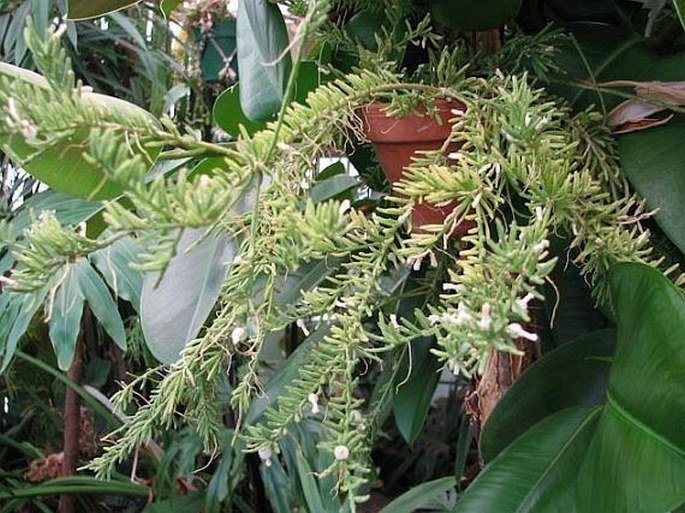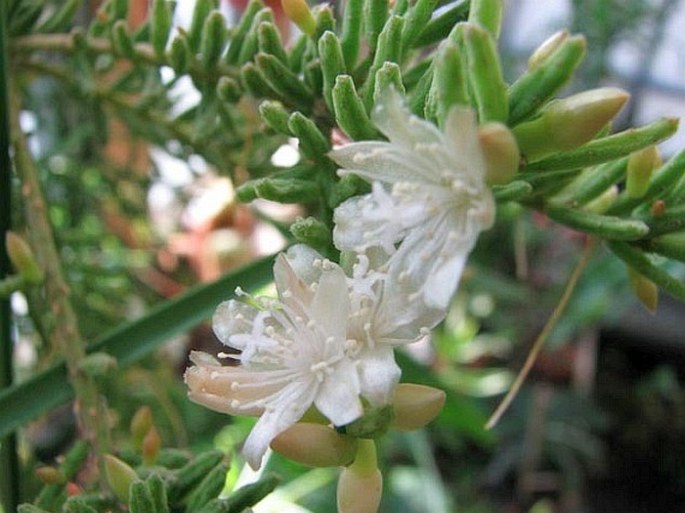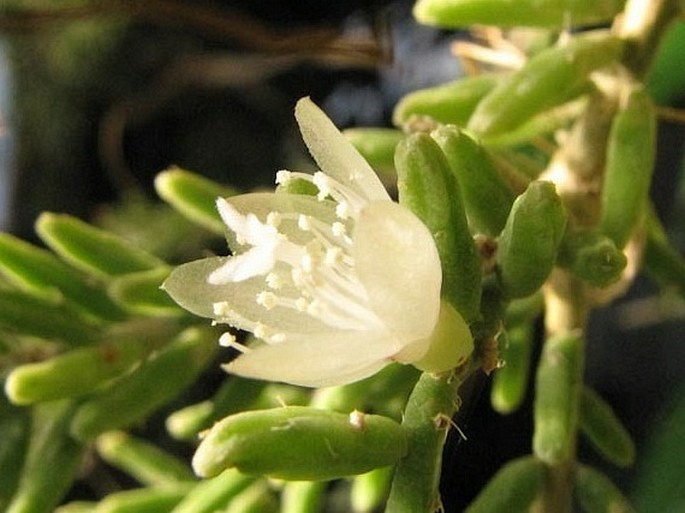Syn.: Rhipsalis salicornioides Haw., Hatiora mesembryanthoides Lem., Rhipsalis echinata Pfeiffer
Family: Cactaceae Juss.

Distribution: Endemic to Rio de Janeiro area, Brazil.
Ecology: Epiphytic species growing on tree trunks, today it is only known from public parks. The original habitat was presumably lowland forest. Blooms at the beginning of rainy season after period of rest.
Description: Branches very dissimilar, main branches elongated, slender, terete, more or less setose, often bearing air roots, covered with short stubby branchlets; these sometimes also bearing short joints, usually less than 1 cm long, angled, with short setae from small areoles; flower buds small, pinkish; flowers solitary at areoles of the branchlets, 1.5 cm across, white or pinkish; petals 5, spreading, acute; stamens about 20, erect, white; style white, stigma lobes 3, white. Fruit short-oblong, 5 mm long, white or tinged red.
Threat and protection: This species is listed by IUCN Red List as critically endangered, it is also protected by CITES.
Note: First flowered in cultivation in England in 1831 and nowadays it is widely spread in cultivation.
It is fancied for its short stem joints which resemble certain species of Mesembryanthemum.




These images were taken in culture.


